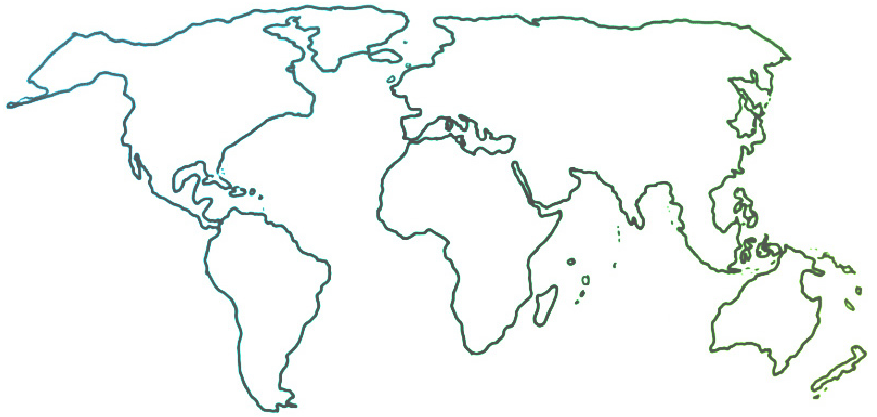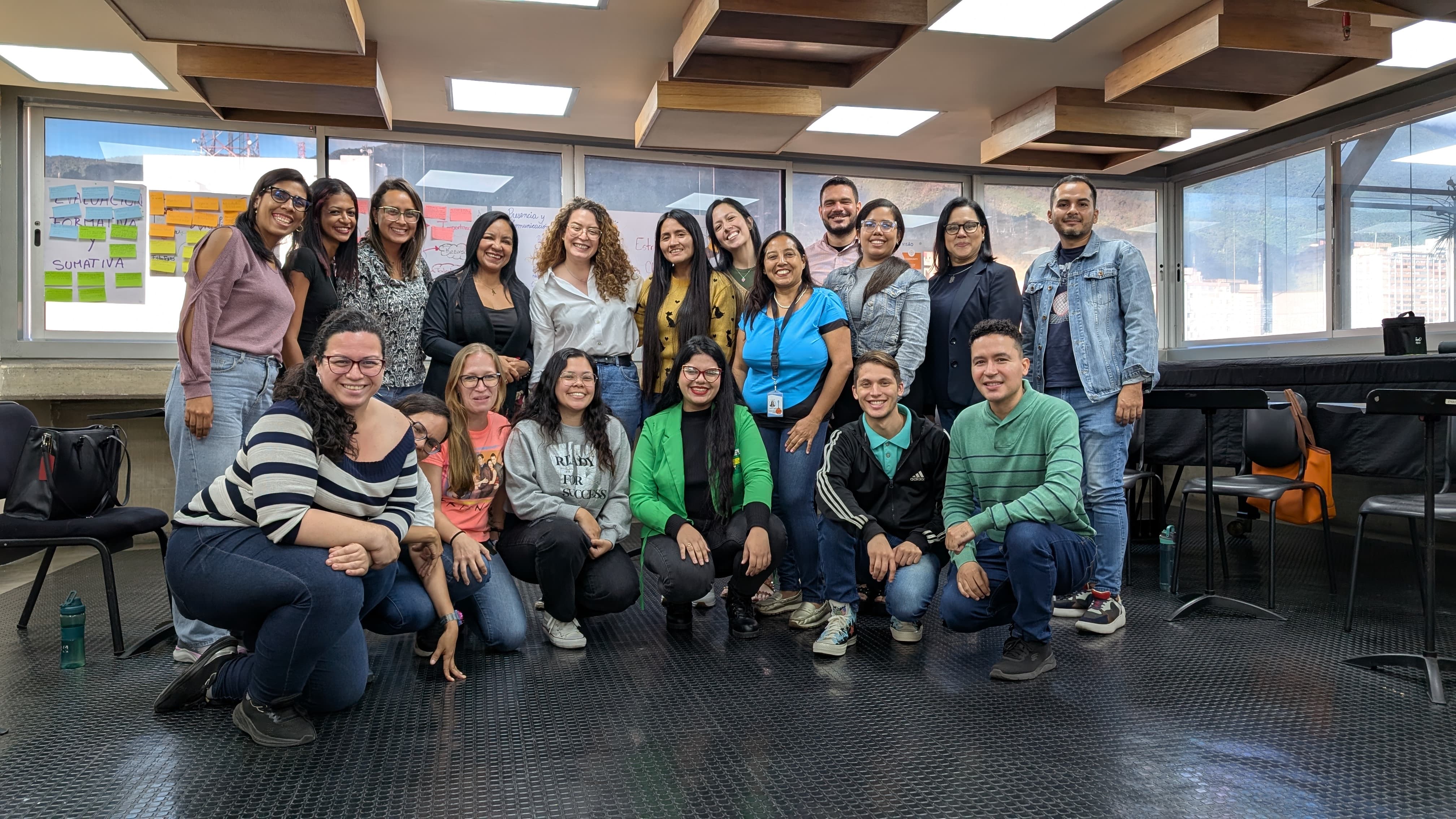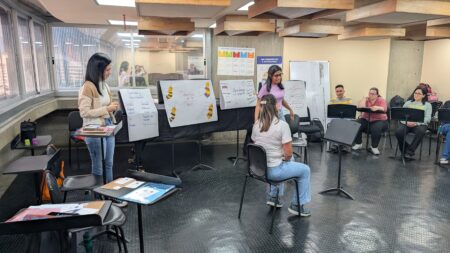
Noticias y recursos
Teacher Learning through the Spark of Action Research
Francis Gagliardi, Program Director, Nucleo, London, England; member of first Firebird team at the Academy for Impact Through Music

The author, fifth from left, with members of the Caracas AIM Chispa, December 2024.
How can I contribute to making something that’s already great even better?
That was the question I asked myself when I took on the challenge of carrying out the first Academy for Impact Through Music (AIM) Chispa, in Caracas, Venezuela, in December 2024.
You may be wondering: What’s a Chispa? And maybe: What is AIM?
AIM is an innovation lab for teaching artists who work to address social inequality through music education. Through AIM, teachers from “music for social action” programs around the world embark on a 15-month learning journey, designing strategies to improve student outcomes.

This past year, AIM enlisted its alumni to share what they’ve learned, by leading intensive three- to five-day teacher trainings in seven Latin American cities (these trainings are called Chispas, the Spanish word for “spark”). Each AIM alumnus was given the freedom to custom-design their training to adapt the “spark” of new learning to the cultural context of each city.
The first Chispa, which I led, was for teachers from the renowned System of Children’s and Youth Orchestras and Choirs of Venezuela (El Sistema). The participants we convened were experienced Sistema teachers who were eager to reflect and grow in their practice. Teachers of almost every instrument attended; their work settings included núcleos, special education programs, and prison programs.
My goal in leading this Chispa training was to create a space for the teachers to reflect on all the skills and outcomes, beyond music, that they wanted for their students—and then to think about how to use music learning to achieve these outcomes. Our first exercise involved imagining our students’ lives: their circumstances, their hopes and dreams. From there, over the course of several days of activities and reflections, the teachers worked together to design “action research” experiments they would conduct when back in their classrooms. (“Action research” is an essential AIM strategy; it means trying out one’s ideas in action and noticing how they work, or don’t work, and how they can work better.)
When the teachers went back to work, they were immediately challenged by frequent electricity outages in Caracas, but they persevered in putting into practice the action research experiments they’d designed in the Chispa training. The results were exciting. Almost right away, their students showed renewed motivation, attended classes more frequently, began practicing on their own initiative at home, and significantly improved their ability to collaborate and work as a team. The overall atmosphere in the ensembles became more participatory and enthusiastic. In every rehearsal room, there was a tangible change in student energy and commitment.

This change was evident in the teachers as well—most dramatically, in the case of one teacher who had confessed in the initial Chispa session that she had decided to resign from her job. She felt, she told us, that she no longer had the strength or the tools to sustain her classes. During the training, however, she found new insights and a renewed sense of purpose. When she returned to teaching, she implemented such significant changes that within a few weeks, attendance in her classes and ensembles steadily increased. She decided not to resign.
For an example of the kinds of ideas a Chispa can spark, let’s look at a few of these changes she initiated. First, she created spaces for students to get to know each other better and share their interests, thus practicing verbal expression and building confidence in communicating ideas. She also designed a “Music Box” to which each student added a song from any genre of their choice; their selections ranged from Venezuelan folk music to Latin pop, K-Pop, and rock. Each week, they explored one of these songs—researching its history, learning it by ear, working on rhythm and melody, and finally singing it in harmony, accompanied by the Venezuelan cuatro. Students were coming to each class excited to discover the next song in the Music Box. And now that they had learned how to approach new music by ear, they explored other songs together as well.
My initial question was answered: it was possible to make something already great even better. The results of my Chispa, and other Chispas elsewhere, are strong evidence that even good teachers need spaces where they are empowered to reflect, innovate, and problem-solve together. Investing in this kind of teacher training is not just valuable; it’s necessary, if our programs are to be truly transformative for our students.
Contenido relacionado
África, Embajadores, Asia, Asia/Oceanía, Europa, América Latina, América del Norte, el conjunto del mundo
El intercambio de embajadores, marzo de 2019
longy-admin

Gather Together, América del Norte, el conjunto del mundo
El Sistema USA lidera el Simposio Nacional 2019
longy-admin

Editoriales, América Latina, América del Norte, Enseñanza y aprendizaje, el mundo en su conjunto
EDITORIAL: La inspiración de los maestros venezolanos
longy-admin


